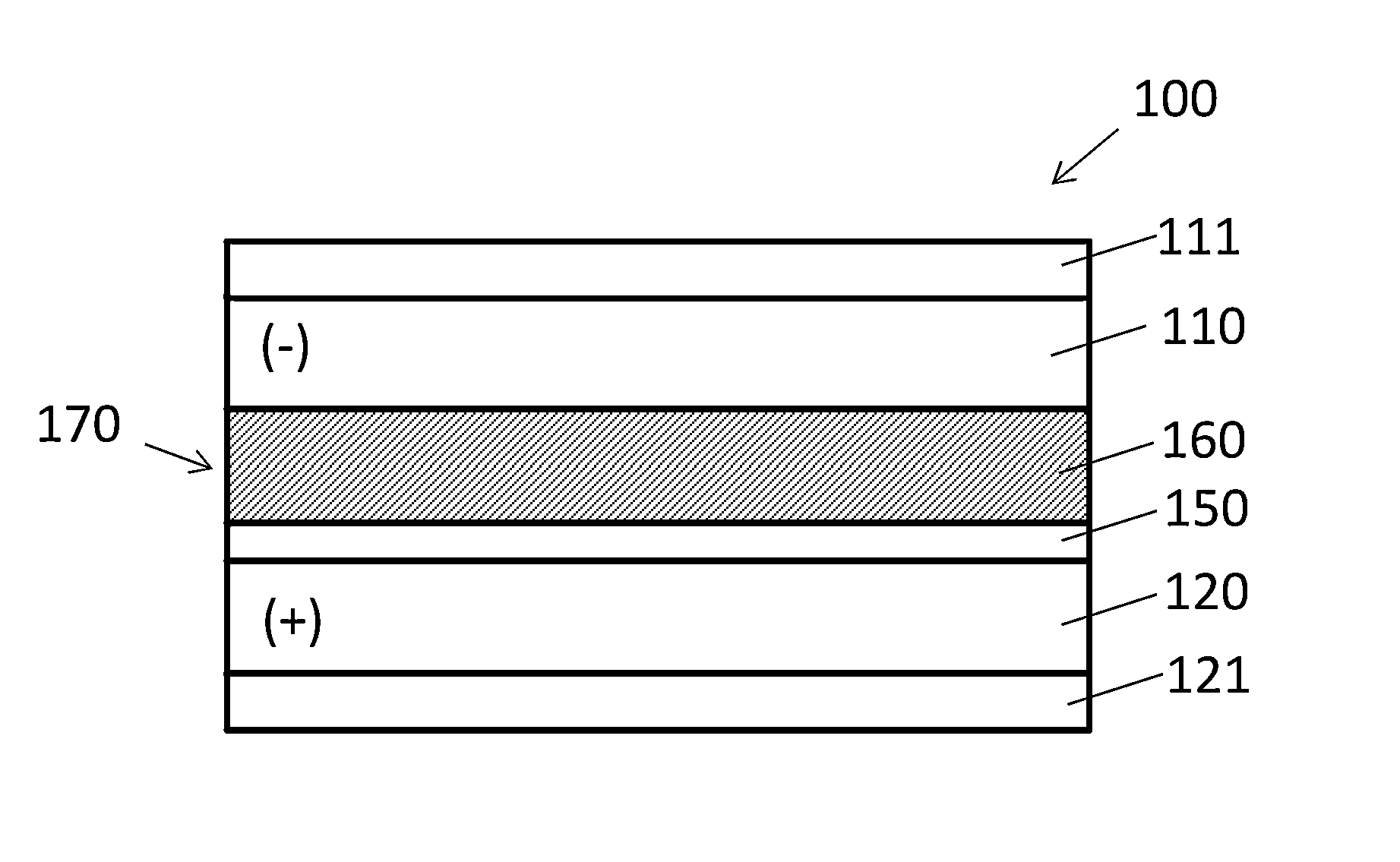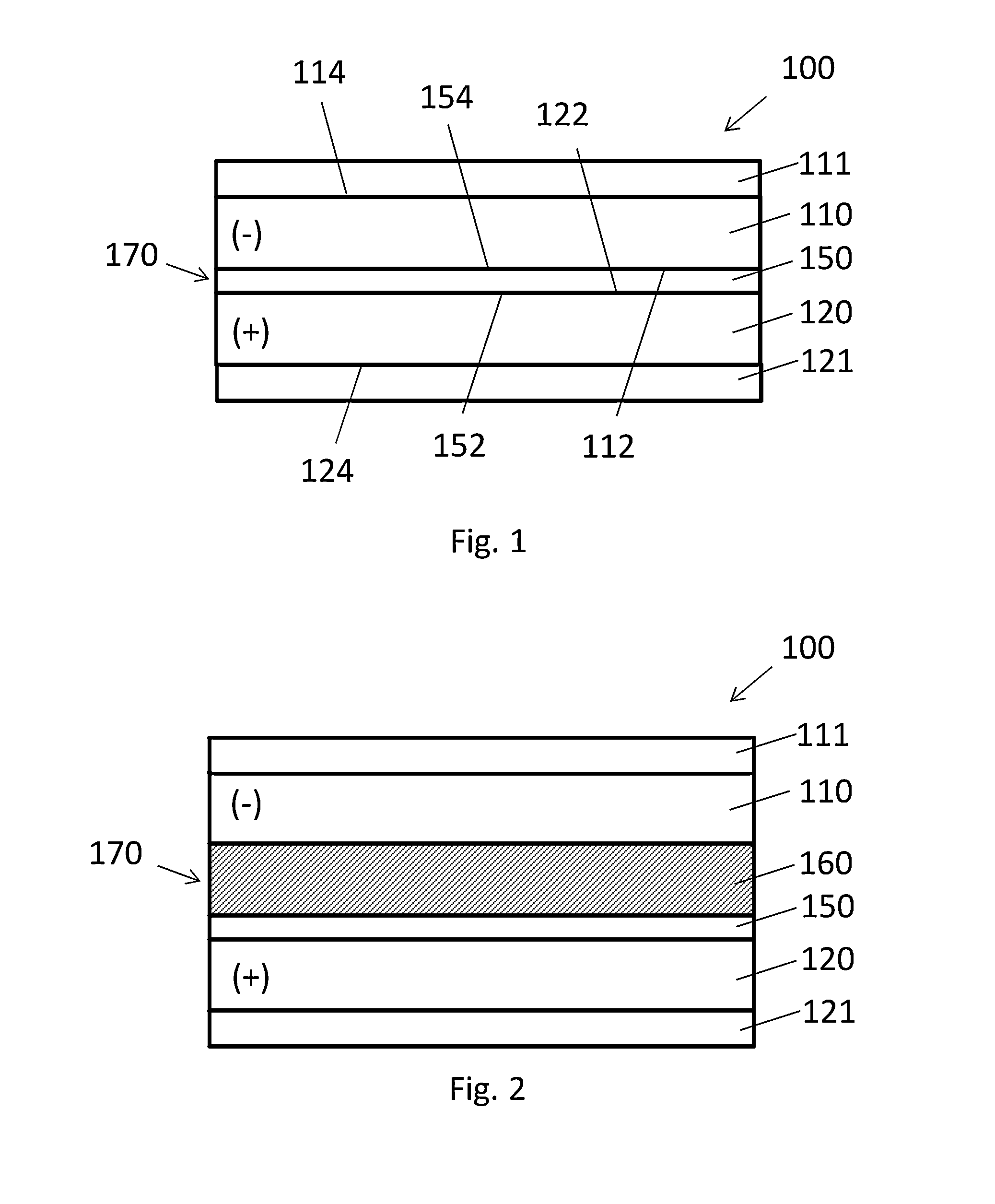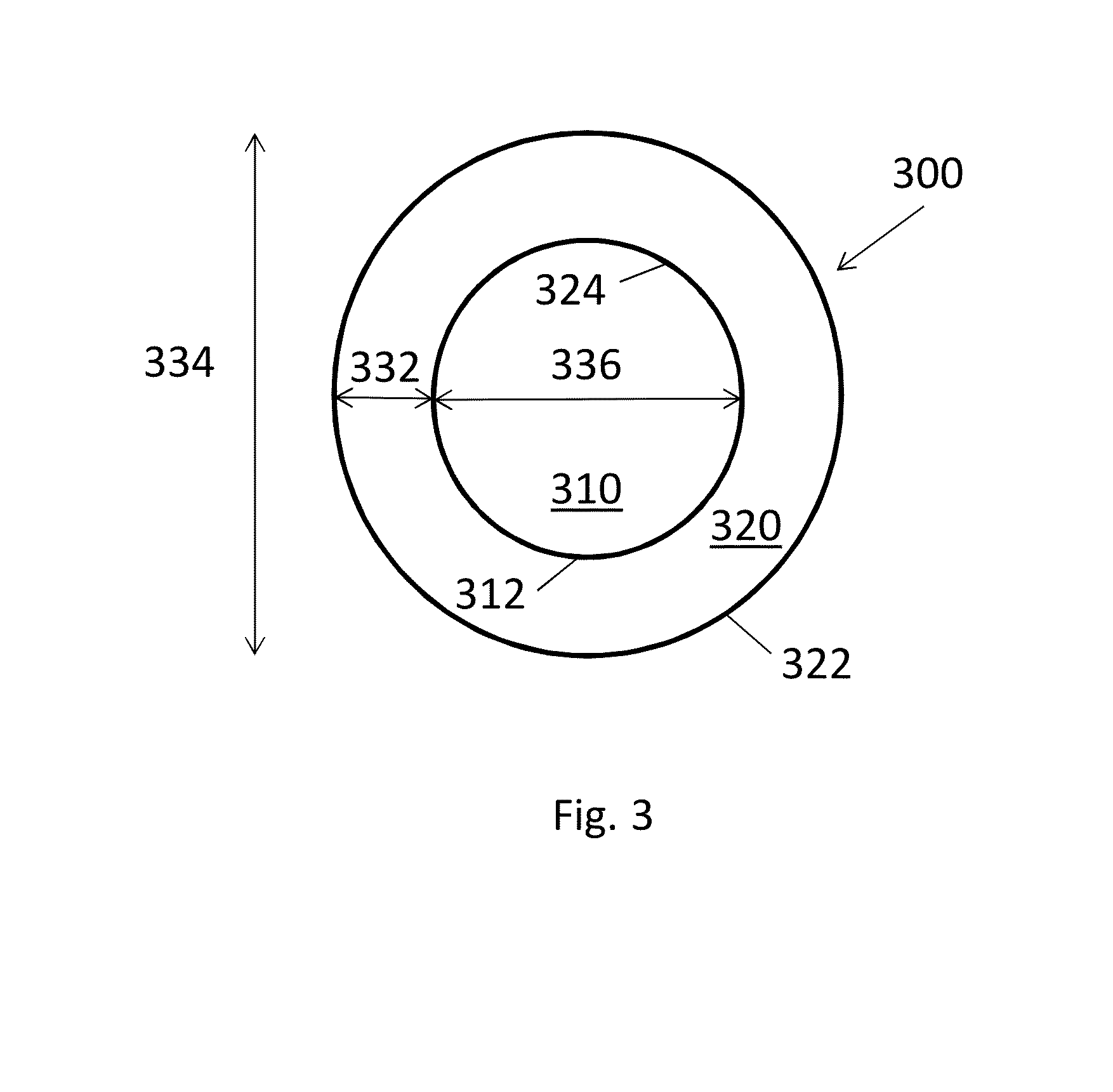Composite electrode for lithium ion capacitor
- Summary
- Abstract
- Description
- Claims
- Application Information
AI Technical Summary
Benefits of technology
Problems solved by technology
Method used
Image
Examples
example 1
[0056]To form a comparative anode, a graphite slurry was prepared by mixing 100 g graphite powder (Aldrich), 2 g carbon black (Cabot Corporation), 10 g polyvinylidene fluoride (PVDF) (Alfa Aesar) and 190 g N-methyl-2-pyrrolidone (NMP) solvent (Sigma-Aldrich) to form a smooth slurry. The slurry was dispersed to a thickness of about 1 mm onto copper foil using a doctor-blade. The graphite slurry-coated copper foil was initially dried in a fume hood, vacuum dried in a 120° C. oven, and then diced into 1.4 cm diameter electrodes. The typical thickness of the graphite electrodes (graphite plus copper current collector) was about 17 mm.
[0057]To form the cathode, activated carbon films were made by grinding activated carbon powder and PTFE binder at a ratio of 90:10 by weight at a speed of 350 rpm to form a mixture that was rolled into a thin sheet. A typical thickness of the activated carbon layer was about 13 mm. The activated carbon was laminated onto aluminu...
example 2
LTO Anode (Comparative)
[0060]LTO electrode ink was prepared by mixing 0.40 g of LTO (Aldrich), 0.05 g of carbon black (Cabot Corporation), 0.05 g of PVDF and 4.00 g of NMP in a mortar. The ink mixture was dispersed onto copper foil (25 microns) using a pipette and dried at ambient atmosphere for two days. The resulting electrode sheet was further dried in a vacuum oven at 120° C. overnight. The dried electrode sheet was cut into discs with a diameter of 1.4 cm.
[0061]An activated carbon cathode was prepared according to the method described in Example 1.
[0062]The LTO electrode (220 microns, 56.3 mg) and the activated carbon electrode (240 microns, 46.0 mg) electrode were assembled into a coin cell capacitor (together with the liquid electrolyte) according to the method described in Example 1.
[0063]The CV response of the assembled cell when held for 7 hours at 2.7 V is shown in FIG. 4. A first cycle is shown as line 401 and a second cycle is shown as line 402. The CV curves are distor...
example 3
14.6% LTO-Hard Carbon Composite Anode
[0064]Ground phenolic resin was heated to 1000° C. at a heating rate of 200° C. / hour, held at 1000° C. for 2 hours to carbonize the resin, and then cooled to room temperature. The thermal cycle was performed under N2 atmosphere with a gas flow rate of 6.18 l / min. The resulting carbon was soaked in 37% HCl overnight and rinsed with deionized water to remove trace impurities. The sample was further soaked in a 29% NH4OH aqueous solution overnight, followed by rinsing with deionized water. The purified hard carbon was heated at 1000° C. for 2 hours under N2 atmosphere. Carbon slurry was prepared using 42.5 g of the resulting hard carbon powder, 5 g PVDF, 2.5 g carbon black and 120 ml NMP solvent.
[0065]A composite anode comprising hard carbon and LTO was prepared by mixing the carbon slurry (5.85 g solids) with 1 g of LTO powder using a pestle. The composition of the mixture included 14.6 wt. % LTO, 72.6 wt. % hard carbon, 8.5 wt. % PVDF and 4.3 wt. ...
PUM
 Login to View More
Login to View More Abstract
Description
Claims
Application Information
 Login to View More
Login to View More - R&D
- Intellectual Property
- Life Sciences
- Materials
- Tech Scout
- Unparalleled Data Quality
- Higher Quality Content
- 60% Fewer Hallucinations
Browse by: Latest US Patents, China's latest patents, Technical Efficacy Thesaurus, Application Domain, Technology Topic, Popular Technical Reports.
© 2025 PatSnap. All rights reserved.Legal|Privacy policy|Modern Slavery Act Transparency Statement|Sitemap|About US| Contact US: help@patsnap.com



